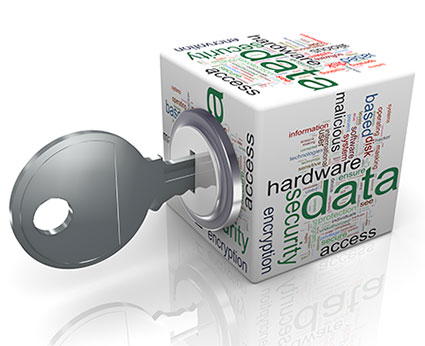 From product designs to social media to medical records and more, our world is saturated with digital data. The popularity of this type of data lies in the fact that it is extremely portable; our mobile society demands it, but that can also be its biggest drawback. All data that has been saved digitally beckons cyber criminals to attack, and data stored on portable devices, like USB drives, is fairly easy to lose.
From product designs to social media to medical records and more, our world is saturated with digital data. The popularity of this type of data lies in the fact that it is extremely portable; our mobile society demands it, but that can also be its biggest drawback. All data that has been saved digitally beckons cyber criminals to attack, and data stored on portable devices, like USB drives, is fairly easy to lose.
Once digital data goes beyond the perimeter or beyond the protection of a company’s IT department, control over the data is lost due to the ability to copy data and forward it anywhere around the world.
So, how do companies allow their employees to work on their files on any device and collaborate with people inside and outside of their company safely and securely?
The first thing that probably comes to mind is the Cloud, a very contemporary buzz word that has taken root within the security industry. While the Cloud does offer basic control of data, Ryan Kalember, chief production officer at Watchdox, explained, “People haven’t thought through the compliance and liability of the Cloud. What people probably don’t realize is that the Cloud provider can be subpoenaed by a court of law to relinquish the information stored on their Cloud.”
Well, if not the Cloud, then how about an online file sharing and content management service? Is it more secure?
This service is also good for basic control, but Kalember points out, “There will always be inescapable trends with this type of data management. All employees store their information there, and all administration can access the data. With these file sharing services, you are unable to prevent people from accessing it.”
Perhaps then, because companies aren’t sure where their files will travel, it is wiser to create content repositories that can be shared securely via mobile devices. Instead of trying to make the devices smarter, it’s better to make the files containing the data smarter so that no trails are left behind.
“By building a security policy into the document itself, security travels with the data,” said Kalember.
The following best practices represent what companies should consider including in their security policy to maintain control of their sensitive information and to prevent a costly data breach:
- Encrypt your data.
- Apply security policy to the files – build in who can access, share and control the data.
- Optimize the file – render it so that it appears pixel perfect because mobile is not able to optimize.
“People need to realize that cybercrime and the theft of intellectual property really does matter,” said Kalember.